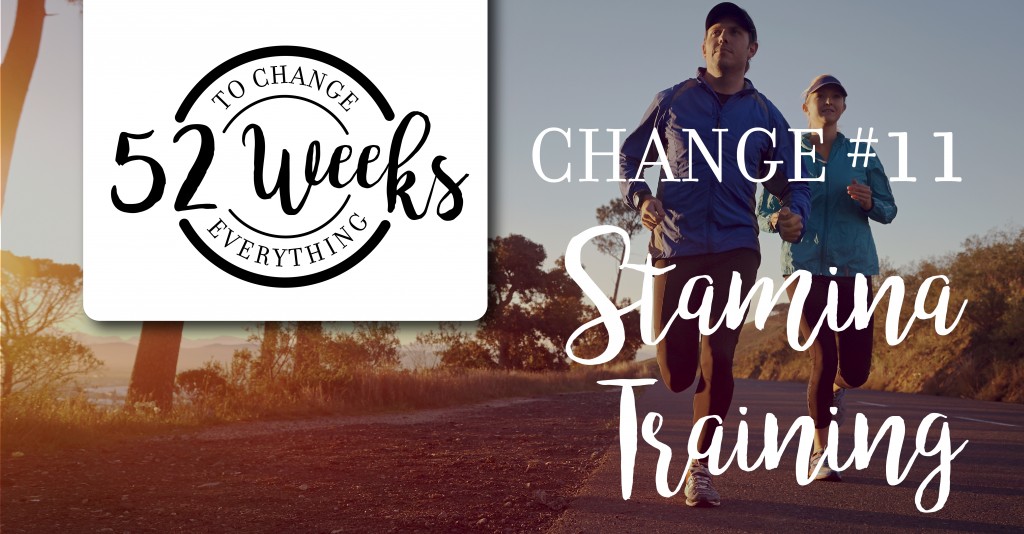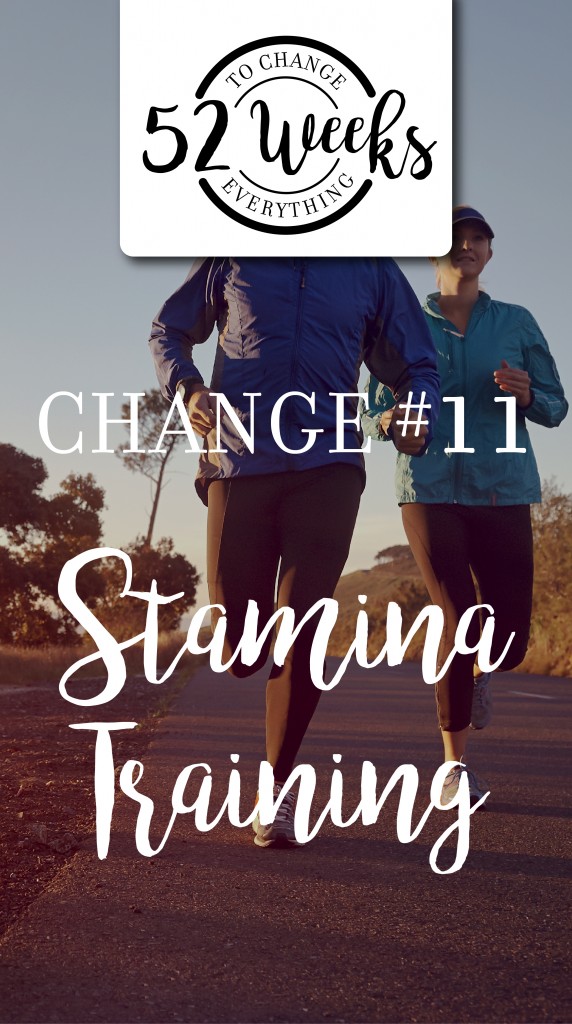
“Cardio” is the common language in the fitness world, and for good reason. Cardiovascular fitness is the ability of the heart, blood cells and lungs to supply oxygen-rich blood to the working muscle tissues and the ability of the muscles to use oxygen to produce energy for movement.
Cardio is important because it boosts blood flow which delivers important nutrients throughout the body. The right approach to cardio can also assist in effective weight loss and improve many health conditions.
But I believe people get a little too hung up on longer and longer cardio workouts and become cardio-holics. Sadly, too much cardio may not be that good for you.
{This is Change #11 in our “52 Weeks to Change Everything” Series. Check out all the posts you’ve missed so far here.}
Cardio Concerns
If the idea of marathon running in the dead of winter or summer, or the pain of cycling (especially on your rear) for an hour with mindless techno music driving into your eardrum in a spin class are akin to absolute torture- don’t worry! The health research doesn’t exactly support extended cardio workouts, such as marathon running…
- Marathon running increases oxidative stress
- Marathon running increases coronary risk
- Endurance runners at risk for calcified coronary plaque
- Atherosclerosis and cardiovascular risk for marathon runners
I don’t mean to offend marathon runners, but even I fall into the delusion that the only way to achieve optimal cardiovascular health is to be able to run or do cardio non-stop for as long as possible. According to my research, the best kind of cardio workouts include short intervals of high intensity with rest periods in between. This would be the difference between sprinting and marathon running.
Other issues with cardio
In addition to actual health risks, I’ve discovered some other problems with extended cardio workouts in my own health journey and with my clients:
- Don’t reach weight goals or hit plateaus because workouts are always cardio and no strength training
- Don’t reach weight goals or hit plateaus because cardio workouts becomes less challenging over time
The answer to problem #1 is to incorporate serious strength training, based on your ability, into your fitness routine.
The answer to problem #2 is to STOP focusing on “cardio” and focus on STAMINA TRAINING.
Why Stamina Training is better than Cardio
Stamina training is cardio, but it’s a term I use for the right kind of cardio workout. With any type of fitness plateaus come when you are no longer challenged. Stamina training, in my own words, means you are continually working toward more challenging goals in your workouts. Just as I mentioned in the Strength Training post: The change happens when you’re out of your comfort zone!
For the right kind of effective cardio I focus on two main goals:
#1: Interval training with short, high-intensity actions, followed by a rest period, such as:
- 1 hour session of sprinting as fast as I can for 30-120 seconds (depending on your stamina training ability), walking for 2-3 minutes, then repeating both steps for the full hour.
- Dance class with includes high-intensity exercises and breaks for instruction in between each exercise.
- Interval training classes- often provided by gyms or fitness instructors
#2 Stamina training: always increasing the challenge level of high-intensity intervals during cardio fitness workouts
My workout week
You may be wondering what my weekly fitness plan actually looks like now that I’ve shared my thoughts on Strength Straining and Stamina Training. As I write this, I’m committed to a 6-day-per-week plan that includes daily stamina training and strength training. On a good week, my routine might look something like this:
- Day 1: 45-60 minute session of sprinting as fast as I can for 30-50 seconds (based on my current stamina training ability), then walking for 2-3 minutes, then repeating for the full workout period. Optional: add a series of pushups, tricep dips, and abdominal exercises.
- Day 2: 1 hour BodyJam or Zumba class, followed by 1 hour of BodyPump (weight training) class at the gym.
- Day 3: 1 1/2 hour Ballet class
- Day 4: 1 hour BodyJam or Zumba class, followed by 1 hour of BodyPump (weight training) class at the gym.
- Day 5: 45-60 minute session of sprinting as fast as I can for 30-50 seconds (based on my current stamina training ability), then walking for 2-3 minutes, then repeating for the full workout period. Optional: add a series of pushups, tricep dips, and abdominal exercises.
- Day 6: 1 1/2 hour Ballet class or Pilates class
…But that’s on a good week. On days where I can’t stick to my routine I try to at least do a series of strength exercises and a walk. I give myself GRACE because I don’t worship or idolize my fitness training. However after having three children and not prioritizing my fitness training for the last nine years, I’ve committed to the challenge of improving my health this year and hit my goals, which include feeling a lot better in this body I’ve been given!
One final tip is to keep a food and workout journal. I recently started this and I LOVE the accountability it gives me. I write everything I eat on the left side of the page each day, and all my fitness actives on the right. It truly helps me stay on track and continually improve my efforts when I keep adding good things on both the diet and fitness columns!
I hope this information helps you create a stamina training plan that works for you. Cheers to you and your health!



